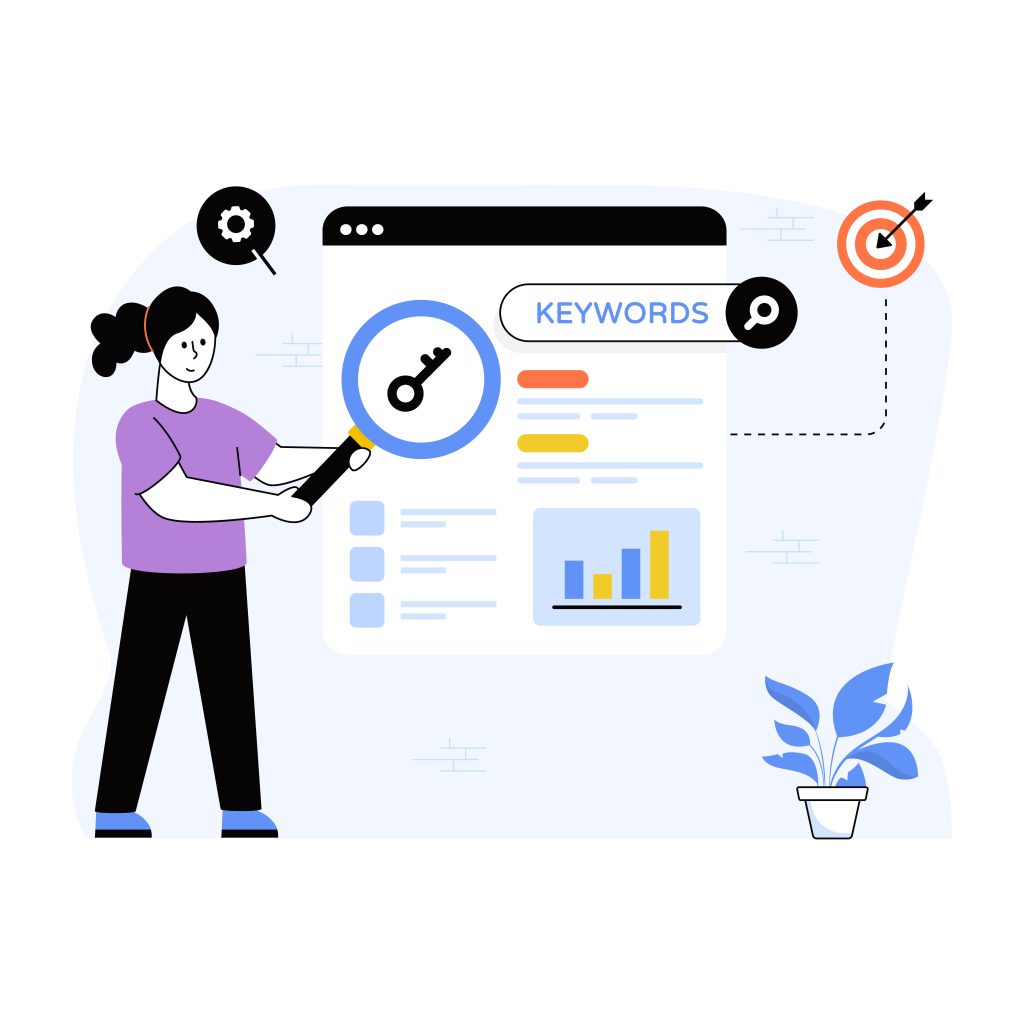Mastering Keyword Optimization: The Key to SEO Success by Garage2Global
In the fast-paced world of digital marketing, keyword optimization has become a cornerstone for achieving online visibility, driving relevant traffic, and boosting conversions. Whether you’re running a small blog or managing a large e-commerce website, effective keyword optimization can significantly improve your SEO strategy, making your content easier to discover and engage with. At Garage2Global, we specialize in crafting SEO strategies that focus on optimizing keywords in a way that resonates with both search engines and your target audience.

The importance of keyword optimization by garage2global, provide actionable tips on how to effectively implement it, and explain how Garage2Global can help you enhance your online presence using these SEO techniques. By focusing on semantic SEO and EEAT (Expertise, Authoritativeness, and Trustworthiness), we’ll ensure your content aligns with best practices while answering real user queries.
Table of Contents
Understanding Keyword Optimization: What Is It?
At its core, keyword optimization refers to the process of strategically placing keywords and phrases into your content to make it more discoverable by search engines like Google. The idea is to target specific words or phrases that your target audience is searching for and to ensure that those keywords are integrated seamlessly into your website’s content.
However, keyword optimization is not just about placing a few terms into your copy and calling it a day. It involves a deeper, more strategic approach that aligns with semantic SEO, where the goal is to make your content contextually relevant and user-focused, rather than merely filling it with high-volume keywords.

Why Is Keyword Optimization Crucial for SEO?
Effective keyword optimization is crucial because it determines how well your website ranks in search engine results pages (SERPs). Here are some reasons why keyword optimization is important:
- Increased Visibility: By targeting the right keywords, you increase your chances of ranking for searches relevant to your business or niche. This higher visibility leads to more organic traffic.
- Improved User Experience: When you optimize for user intent and incorporate keywords that answer real-world queries, your content is more likely to resonate with your audience, creating a better experience and reducing bounce rates.
- Enhanced Authority: By consistently optimizing your content for relevant keywords and delivering valuable, high-quality information, you improve your site’s Expertise, Authoritativeness, and Trustworthiness (EEAT)—key signals for Google’s algorithm that help your content rank higher.
- Better Conversion Rates: Traffic driven by targeted keyword optimization is more likely to convert. When users find exactly what they’re searching for, they are more inclined to take the next step, whether it’s making a purchase, subscribing to a newsletter, or engaging with the content.
The Art of Semantic SEO and Keyword Optimization
While traditional SEO practices focused largely on the repetition of keywords, semantic SEO takes a more sophisticated approach by analyzing the context surrounding keywords and phrases. Semantic SEO ensures that the content isn’t just about the words you’re targeting, but also about the meaning behind those words and how they connect with each other.
How Does Semantic SEO Work?
Semantic SEO involves understanding the underlying intent behind search queries and using a broader set of related keywords (including LSI keywords) to make your content more comprehensive. By focusing on related terms and variations, your content will naturally appear more authoritative and relevant to search engines, which increases the likelihood of ranking for a wider range of terms.
For example, if you’re targeting the keyword “best leather handbags,” you might also want to optimize for related phrases like “premium leather purses,” “luxury leather bags,” or “high-quality leather totes.” These LSI (Latent Semantic Indexing) keywords help search engines understand the topic of your content better, improving your chances of ranking for a variety of related searches.

Importance of User Intent
Another essential aspect of semantic SEO is understanding user intent—the reason behind the search. There are generally four types of user intent:
- Informational Intent: The user is looking for information on a specific topic (e.g., “how to clean leather handbags”).
- Navigational Intent: The user wants to visit a specific website (e.g., “Saddler leather handbags official site”).
- Transactional Intent: The user is ready to make a purchase (e.g., “buy leather handbags online”).
- Commercial Investigation: The user is researching products before making a purchase (e.g., “best leather handbag brands”).
By tailoring your content to address these different types of intent, you not only improve the quality of your content but also make it more likely to appear in relevant searches.
Best Practices for Keyword Optimization
Effective keyword optimization is not just about inserting keywords wherever you can. Here are some best practices to follow:
1. Conduct Thorough Keyword Research
Before implementing any keyword strategy, you must conduct thorough keyword research. This involves identifying the terms that are most relevant to your audience and your business. Tools like Google Keyword Planner, Ahrefs, and SEMrush can help you identify high-volume, low-competition keywords that your target audience is searching for.
Don’t limit yourself to just one keyword—target a cluster of related keywords. This will not only increase the chances of ranking for multiple search terms but also provide a more comprehensive resource for your audience.
2. Focus on Content Quality
Keyword optimization should always go hand-in-hand with content quality. If your content is valuable, informative, and engaging, users are more likely to stay on your page, engage with your content, and take desired actions.
Create content that answers the questions your audience is asking. This will increase user satisfaction and reduce your bounce rate—two factors that Google’s algorithm takes into account when ranking content.
3. Use Keywords Naturally
It’s essential to integrate keywords naturally into your content. Keyword stuffing, or overusing keywords, can result in penalties from search engines and provide a poor user experience. Instead, aim to place keywords in a way that reads organically and doesn’t disrupt the flow of the content.
Focus on placing your primary keyword in key places like the title, headings, first 100 words, and throughout the content in a manner that feels natural.
4. Optimize Meta Tags and Descriptions
Meta tags, such as title tags and meta descriptions, play an essential role in keyword optimization. Incorporate your primary keywords into these elements to improve search engine rankings and attract more clicks from users.
The title tag is the first thing users see in search engine results, so make it compelling. The meta description should summarize the content and provide a reason for users to click on your page.
5. Ensure Mobile Optimization
With an increasing number of users browsing the web on mobile devices, it’s essential that your website is mobile-friendly. Search engines like Google prioritize mobile-optimized sites, which can help improve rankings and provide a better user experience.
6. Leverage Internal Linking
Internal linking helps spread link equity throughout your website, improving your SEO. Link to other relevant pages within your website using anchor text that includes related keywords. This not only helps with keyword optimization but also keeps users engaged on your site longer.

How Keyword Optimization by Garage2Global Can Help You Achieve Success?
At Garage2Global, we understand that SEO and keyword optimization are crucial to the long-term success of your online business. We leverage our deep knowledge of semantic SEO and user intent to create optimized, user-focused content that ranks well on search engines.
By focusing on both keyword clusters and EEAT principles, we ensure that your website ranks for a broad range of relevant search queries while positioning your brand as an authority in your field. Our SEO team uses cutting-edge tools and strategies to drive organic traffic, increase brand visibility, and improve conversion rates.
Whether you’re looking to rank higher for specific keywords or optimize your entire website, Garage2Global offers comprehensive SEO services tailored to your needs.
Keyword optimization is a fundamental part of any SEO strategy that can yield impressive results when done correctly. By focusing on semantic SEO, user intent, and EEAT, you can improve your rankings and provide a better user experience. At Garage2Global, we specialize in crafting tailored keyword optimization strategies that align with your business goals and ensure long-term SEO success.
If you’re ready to take your SEO efforts to the next level, contact Garage2Global today and let us help you build a strategy that works for your brand. Let’s unlock the full potential of your content and drive the results you’re aiming for.
FAQ’s of keyword optimization for SEO
What is Keyword Optimized?
Keyword optimization refers to the strategic placement of relevant keywords in your website’s content to make it more discoverable by search engines. It’s not just about using specific words or phrases but using them in a way that aligns with both user intent and the way search engines evaluate content. Proper keyword optimization ensures that your content ranks higher for search queries related to your business or niche, driving organic traffic to your site.
This optimization involves:
- Selecting the right keywords based on search volume, competition, and relevance.
- Placing keywords naturally in the content (including headings, subheadings, meta descriptions, and body text).
- Incorporating related terms (LSI keywords) to help search engines understand the content context better.
- Balancing keyword frequency to avoid keyword stuffing while ensuring visibility.
How to Optimize Google Keywords?
Optimizing Google keywords effectively involves several strategies to ensure that your content aligns with search engine algorithms. Here are some key steps to optimize Google keywords:
- Keyword Research:
Use tools like Google Keyword Planner, SEMrush, or Ahrefs to find high-volume, low-competition keywords relevant to your industry or niche. Identify long-tail keywords, which often have lower competition and higher conversion rates. - Understand User Intent:
Google focuses on user intent when ranking content. So, understanding whether users are looking for information, looking to make a purchase, or researching products (commercial intent) is crucial. - Incorporate Keywords Naturally:
Place your keywords in strategic locations such as the title, meta descriptions, headers, and body content. Ensure that it flows naturally and enhances the user experience. - Optimize for Featured Snippets:
Structure your content with clear, concise answers to common questions, bullet points, and short paragraphs to increase your chances of appearing in Google’s featured snippets. - Use Related Keywords (LSI Keywords):
Include semantic variations of your target keywords. For example, if your primary keyword is “best leather bags,” LSI keywords might include “luxury leather purses,” “high-quality leather totes,” etc. - Improve Page Load Speed:
Google considers page speed as a ranking factor. Ensure that your website is optimized for fast loading times to improve both user experience and SEO. - Mobile Optimization:
Make sure your website is responsive and mobile-friendly. With Google’s mobile-first indexing, this is crucial for ranking well on Google. - Use Internal Linking:
Link to other relevant pages within your website to help distribute link equity and keep visitors engaged on your site longer.
What are the 4 Types of Keywords in SEO?
In SEO, there are generally four types of keywords, each serving a different purpose in driving traffic and addressing various user intents:
- Short-Tail Keywords (Head Keywords):
- Definition: These are very broad and general keywords, usually consisting of 1 to 3 words.
- Example: “leather bags”
- Purpose: They have high search volume but are highly competitive. They might not lead directly to conversions but can help attract a broad audience.
- Long-Tail Keywords:
- Definition: These are longer, more specific keyword phrases, often with 3 or more words.
- Example: “best leather handbags for women”
- Purpose: They have lower search volume but higher intent, meaning they are more likely to convert. Long-tail keywords are great for targeting niche audiences.
- LSI (Latent Semantic Indexing) Keywords:
- Definition: LSI keywords are related terms or synonyms that help search engines understand the context of the content.
- Example: If your primary keyword is “leather bags,” LSI keywords might include “genuine leather purses,” “luxury leather bags,” or “handmade leather handbags.”
- Purpose: LSI keywords improve the comprehensiveness of content and help with ranking for a wider range of related searches.
- Transactional Keywords:
- Definition: These keywords signal an intent to buy or engage in a transaction.
- Example: “buy leather bags online” or “best leather bags for sale”
- Purpose: These are high-conversion keywords that target users who are in the final stages of their purchasing decision. They are crucial for e-commerce sites.

How to Improve SEO for Keywords?
Improving SEO for keywords involves several practices aimed at making sure that your content ranks higher for the targeted terms. Here’s how you can improve your SEO for keywords:
- Optimize On-Page SEO:
- Use your target keywords in the title tag, meta descriptions, headers, and throughout the content naturally.
- Ensure the keyword appears in the first 100 words of the content for better ranking potential.
- Avoid keyword stuffing, and instead use LSI keywords to make the content more relevant and comprehensive.
- Create High-Quality Content:
Content should be informative, well-researched, and engaging. Google rewards content that answers users’ questions comprehensively. Ensure that your content provides real value to your readers, not just a place for keywords. - Build Backlinks:
Having high-quality backlinks from authoritative websites is crucial for boosting your content’s authority. Link-building strategies such as guest blogging, outreach, and creating shareable content can help increase your site’s link equity. - Focus on User Experience (UX):
Google evaluates user experience as part of its ranking algorithm. Ensure your site is easy to navigate, loads quickly, and is mobile-friendly. A good user experience can lead to longer session times and lower bounce rates, which positively impacts SEO. - Utilize Structured Data (Schema Markup):
Implementing schema markup helps search engines understand your content better, leading to enhanced visibility in the SERPs. For example, using schema for reviews, product pages, or FAQs can make your content eligible for rich snippets. - Monitor Analytics:
Use tools like Google Analytics and Google Search Console to monitor the performance of your keywords. Regularly track your keyword rankings and analyze what works and what doesn’t, making adjustments as necessary. - Improve Content Length and Depth:
Google tends to favor long-form content that provides comprehensive coverage of a topic. Aim for content that thoroughly answers the search query, and be sure to cover various aspects of the topic to improve your chances of ranking.
